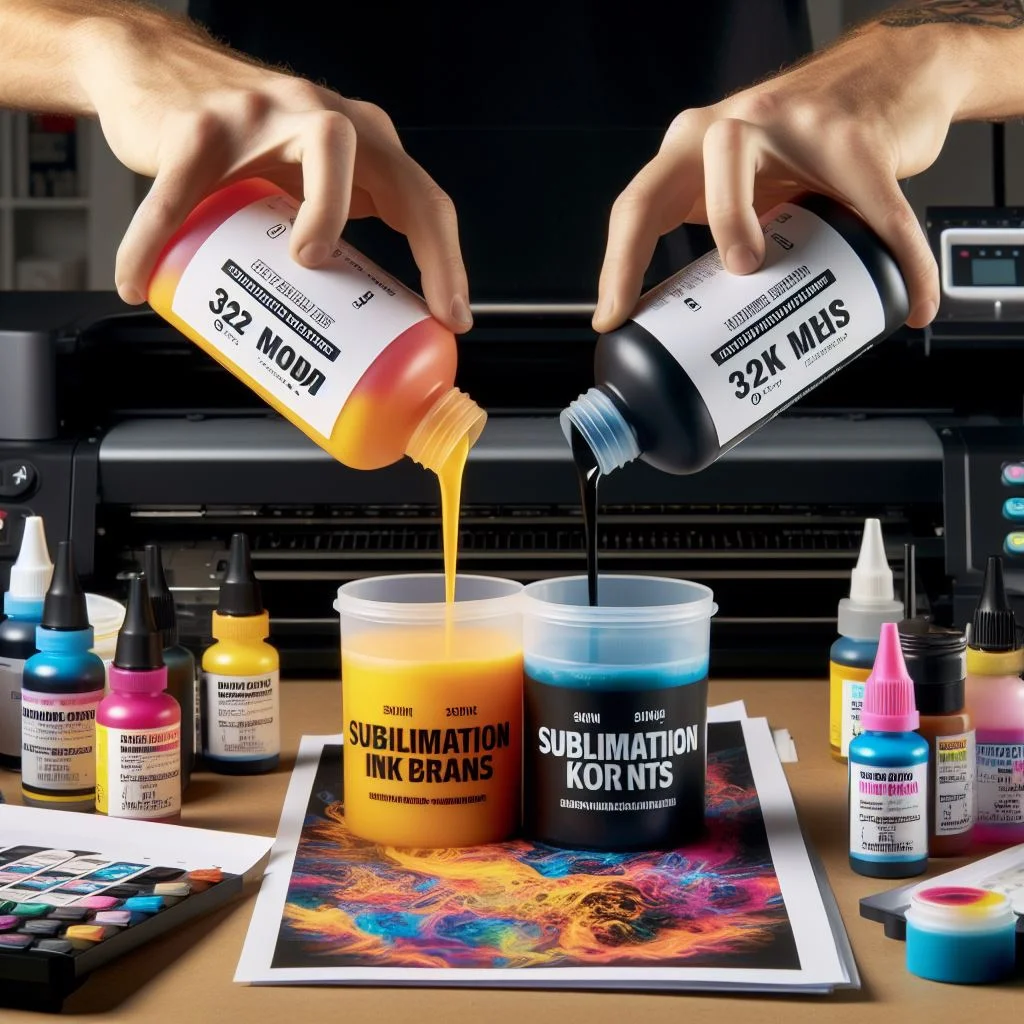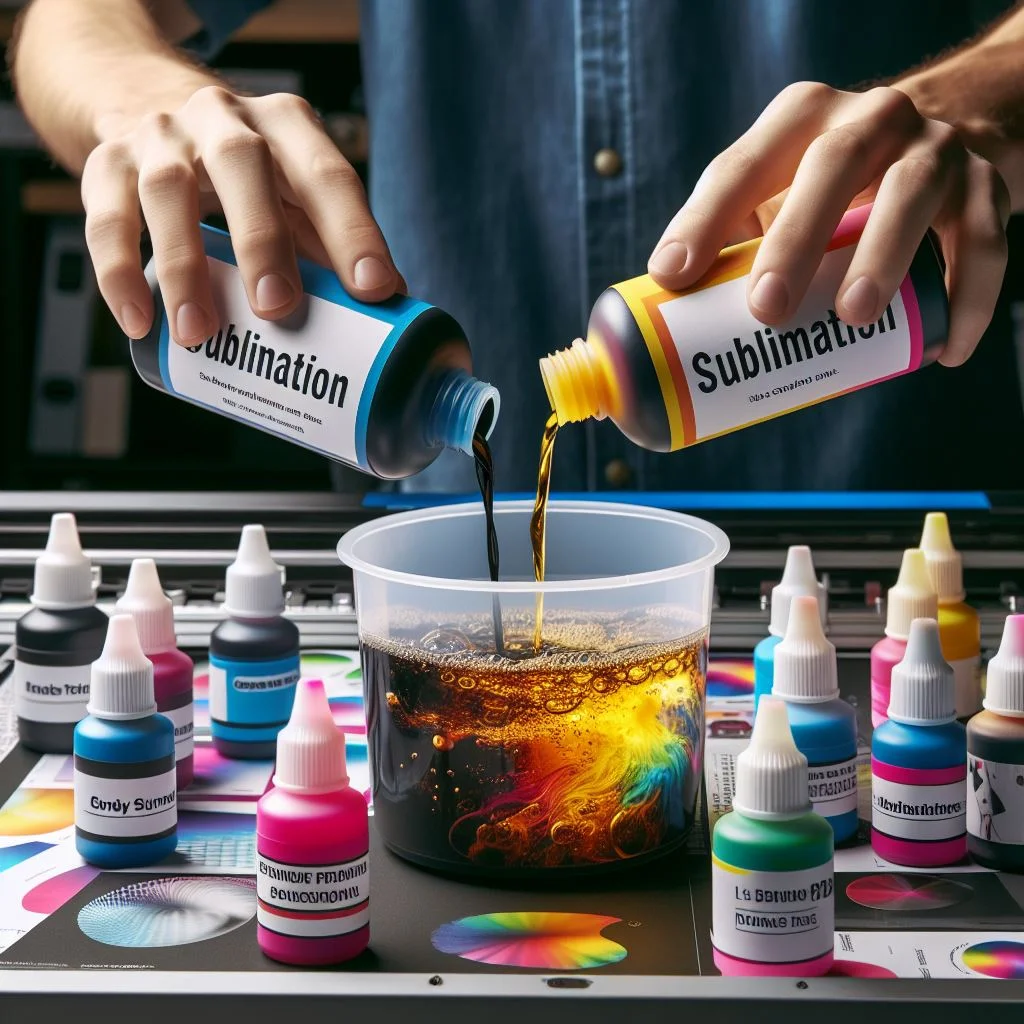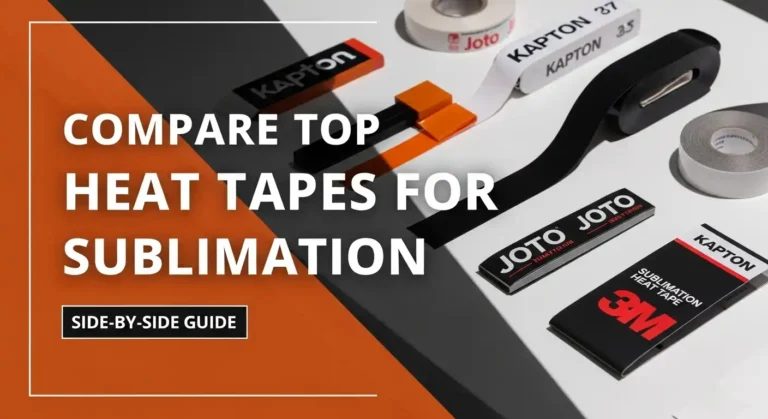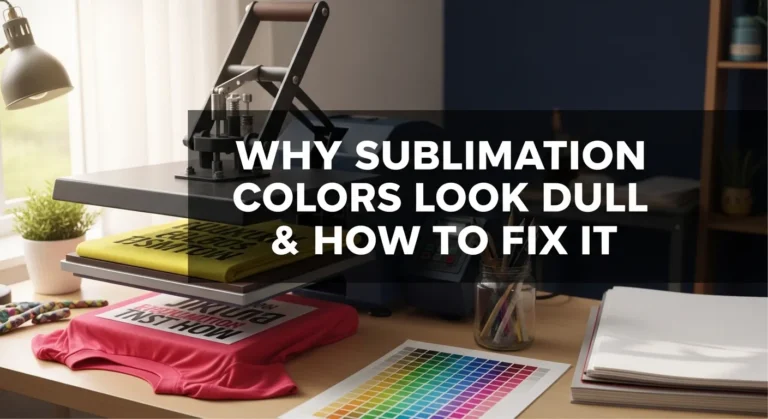Mixing Sublimation Ink Brands: Dos, Don’ts, and Expert Tips
Wondering if you can mix sublimation ink brands or switch inks safely? Learn the best practices for changing sublimation ink, the risks of mixing inks, and tips for choosing the best brands to protect your printer and ensure vibrant prints.
But as you delve into sublimation, a common question arises: Can you mix ink brands? For both new printers and seasoned veterans, the idea holds a mix of curiosity and concern.
That’s where Subli Genius Print steps in. With years of expertise in the sublimation world, we’re here to demystify the topic and guide you towards the best choices for your printing projects.
If you use sublimation printing, you may wonder if you can mix ink brands when refilling your sublimation ink cartridges. The answer is yes, you can mix different brands of sublimation ink, but there are some essential factors to consider before doing so.
Compatibility: Not All Inks Are Created Equal
- The Science of Ink: Start by explaining the basics—sublimation inks aren’t your average printer ink. Each brand develops its unique formula with variations in viscosity (thickness), dye types, and specialized additives.
- It’s Not Just About Color: While color differences are the most obvious, also mention that mismatched inks can lead to:
- Clogged printer heads
- Inconsistent transfer results
- Reduced print longevity
- A Word of Caution: Emphasize that these issues aren’t a guarantee, but the risk increases when mixing brands. This is where you subtly suggest that a single, high-quality brand like Subli Genius Print can provide greater consistency and potentially spare you from unexpected headaches.
When Mixing Might Be Considered
Despite the compatibility concerns, there are a few situations where the allure of mixing inks might make sense:
- Legacy Colors: A beloved ink shade gets discontinued, and mixing seems like the only way to replicate it. Stress that careful research and testing are crucial in this situation.
- Brand Exploration: Curiosity strikes, and you want to experiment with a new brand’s ink alongside your current one. Emphasize the importance of starting small and documenting everything.
- Seeking Savings: Budget constraints can be a reality. Briefly acknowledge this potential reason but strongly caution against risking costly printer damage for small cost savings on ink.

Understanding Sublimation Inks
Sublimation inks are specially dyed inks that become gas when heated and bonded with specially coated sublimation paper or fabrics. This allows the ink to become part of the material you are printing rather than just lying on top.
All sublimation inks contain similar essential components – colourants and carriers. However, the specific formulations and ratios of the ingredients can vary across brands.
! Things to Keep in Mind When Mixing Brands
While mixing brands is possible, follow these professional tips to ensure optimal results and avoid common pitfalls.
✓ Check Compatibility
Confirm brands are chemically compatible before mixing. Incompatible inks may clog print heads. Consult manufacturer documentation.
✓ Mix Colors Separately
Only mix the same color inks (cyan with cyan). Avoid mixing different brands’ versions of the same color to prevent distortion.
✓ Combine in Ratio
Follow manufacturer-recommended mixing ratios precisely. Never eyeball measurements as improper ratios affect ink performance.
✓ Mix Thoroughly
Shake or stir combined inks vigorously for complete incorporation before refilling cartridges.
✓ Print Test Pages
Always run test prints on plain paper first to verify nozzle function and color accuracy before using expensive sublimation media.
✓ Watch for Changes
Monitor for clogging or color shifts after mixing. Be prepared to adjust ratios if issues arise.
⚠️ Pro Tip: When in doubt, stick with one brand’s complete ink system for guaranteed compatibility and optimal results.
How to Safely Change Sublimation Ink Brands
Preparing carefully is necessary for switching to maintain print quality and prevent printer issues. To ensure a smooth transition while protecting both your printer and prints, follow these steps.
1. Prepare for the Switch
- Identify Compatible Inks: Not all sublimation inks are created equal. Ensure the new ink is compatible with your specific printer model to avoid performance issues.
- Consult Manufacturer Guidelines: Manufacturers often provide recommendations or restrictions regarding ink usage. Adhering to these guidelines helps maintain warranty coverage and optimal printer function.
2. Flush and Clean the Printer
Before introducing new ink, it’s crucial to remove any remnants of the previous brand to prevent mixing, which can lead to clogs or color inconsistencies.
- Required Tools:
- Syringe or bulb for extracting ink.
- Cleaning solution compatible with your printer.
- Lint-free cloths.
- Step-by-Step Process:
- Power Down: Turn off and unplug the printer to ensure safety.
- Access Ink Reservoirs: Open the printer to reach the ink tanks or cartridges.
- Extract Remaining Ink: Use the syringe to remove as much old ink as possible.
- Clean the System: Introduce the cleaning solution into the ink lines and printhead, following the manufacturer’s instructions.
- Dry the Components: Allow all parts to air dry completely before reassembly.
3. Test the New Ink
After cleaning, it’s essential to verify that the new ink functions correctly.
- Run Test Prints: Print a series of test pages to assess color accuracy and print quality.
- Monitor Performance: Observe the printer over the next few days to ensure consistent output and address any issues promptly.
Mixing Sublimation Ink with Regular Ink: What Happens?
It is highly discouraged because of their different chemical compositions and applications. To maintain printer performance and ensure quality prints while avoiding potential damage and poor results, it is important to understand their distinct properties and follow best practices.
Chemical Composition Differences
| Aspect | Sublimation Ink | Regular Ink |
|---|---|---|
| Base Composition | Dye-based, designed to transition from solid to gas under heat | Pigment or dye-based, formulated to dry on the surface of substrates |
| Application Method | Requires heat press to transfer onto polyester or polymer-coated materials | Applies directly onto paper or various substrates without heat activation |
| Molecular Behavior | Sublimates (solid to gas) at high temperatures, bonding at a molecular level | Dries through absorption or evaporation, forming a layer on the surface |
Risks of Mixing Inks
- Printer Damage: Combining these inks can cause chemical reactions leading to clogs in the printhead. This may result in costly repairs or necessitate printer replacement.
- Poor Print Quality: The incompatibility can produce faded colors, streaks, or incomplete images, compromising the integrity of the final product.
Steps to Address Accidental Mixing
If inks have been inadvertently mixed:
- Cease Printing Immediately: Stop all print jobs to prevent further contamination.
- Flush the Ink System:
- Use a manufacturer-recommended cleaning solution to purge the mixed ink from the system.
- Follow the printer’s maintenance guidelines meticulously during this process.
- Replace Ink Cartridges:
- Install new, compatible cartridges to ensure purity of the ink supply.
- Perform Test Prints:
- Run multiple test pages to verify that the printer is functioning correctly and that print quality has been restored.
Choosing the Best Sublimation Ink Brands
For achieving vibrant, durable prints and ensuring your printer operates smoothly. Consider the following 3 factors when choosing:
| Brand | Printer Compatibility | Color Vibrancy | Durability | User Rating |
|---|---|---|---|---|
| Hiipoo | Epson EcoTank Series | High | Excellent | 4.8/5 |
| Cosmos Ink | Converted Epson Printers | Very High | Good | 4.7/5 |
| Epson UltraChrome DS | Epson SureColor F-Series | Exceptional | Outstanding | 4.9/5 |
| Printers Jack | Epson EcoTank and Workforce Series | High | Very Good | 4.6/5 |
| Sawgrass SubliJet HD | Sawgrass Virtuoso Series | Very High | Excellent | 4.8/5 |
Is it Worth the Hassle?
While mixing sublimation ink brands takes some extra diligence, you can save money on ink costs. If you take the proper precautions, you can combine different brands without compromising print quality. But sticking with inks from a single brand is advised for maximum convenience and performance.
The key is testing compatibility, keeping colours separate, mixing correctly, and printing test pages to match the correct ratios. With some extra care, mixing sublimation ink can be done successfully.
🚀 Elevate Your Printing Game
Professional printing resources for stunning results
The Bottom Line: While mixing sublimation inks might seem tempting, weigh the potential risks against the rewards. It could compromise your project and, in the worst-case scenario, damage your printer.
Can you mix sublimation ink brands?
Yes, you can mix sublimation ink brands, but it’s generally not recommended. Different brands use unique formulas and chemical compositions, which can lead to inconsistencies in color, print quality, and potential printer clogs. Your printer warranty may be void or compatibility issues with the internal components may occur if you mix inks.
If you must switch sublimation ink brands:
- Flush the System: Fully clean out the existing ink from your printer’s system to avoid cross-contamination.
- Test Before Full Use: Run test prints to check color accuracy and printer performance after switching inks.
- Choose Compatible Inks: Some brands are designed to work with specific printers or other ink brands, so research compatibility before mixing or switching.
Tips for Optimal Sublimation Printing
Regular maintenance of your printer by cleaning the printed and updating firmware is essential to achieve optimal sublimation printing results.
Select sublimation paper and ink that are compatible with your printer model and of high quality. After changing inks, ensure consistent print quality by recalibrating color profiles and performing cleaning cycles to avoid clogging.




